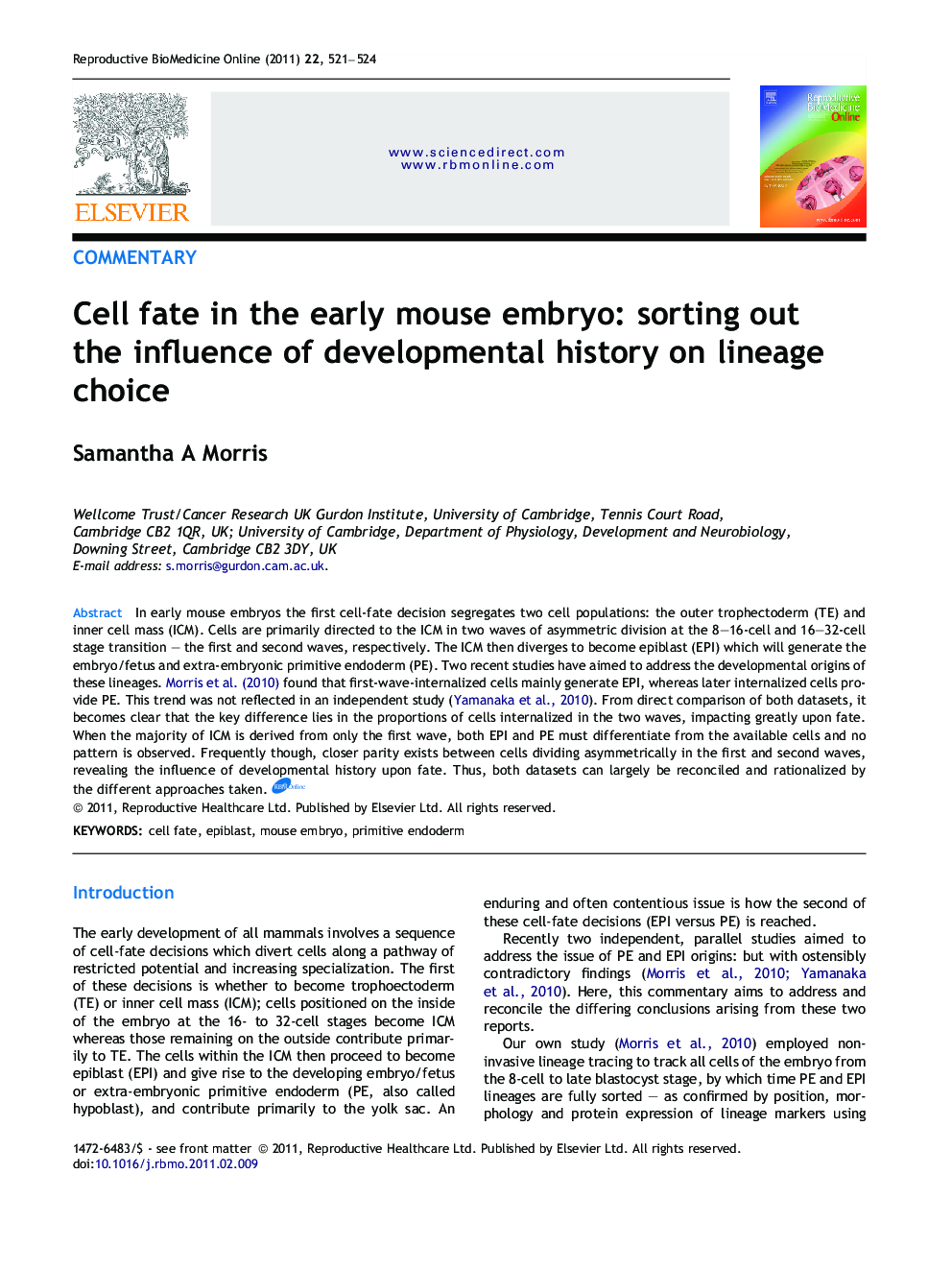| Article ID | Journal | Published Year | Pages | File Type |
|---|---|---|---|---|
| 3971287 | Reproductive BioMedicine Online | 2011 | 4 Pages |
In early mouse embryos the first cell-fate decision segregates two cell populations: the outer trophectoderm (TE) and inner cell mass (ICM). Cells are primarily directed to the ICM in two waves of asymmetric division at the 8–16-cell and 16–32-cell stage transition – the first and second waves, respectively. The ICM then diverges to become epiblast (EPI) which will generate the embryo/fetus and extra-embryonic primitive endoderm (PE). Two recent studies have aimed to address the developmental origins of these lineages. Morris et al. (2010) found that first-wave-internalized cells mainly generate EPI, whereas later internalized cells provide PE. This trend was not reflected in an independent study (Yamanaka et al., 2010). From direct comparison of both datasets, it becomes clear that the key difference lies in the proportions of cells internalized in the two waves, impacting greatly upon fate. When the majority of ICM is derived from only the first wave, both EPI and PE must differentiate from the available cells and no pattern is observed. Frequently though, closer parity exists between cells dividing asymmetrically in the first and second waves, revealing the influence of developmental history upon fate. Thus, both datasets can largely be reconciled and rationalized by the different approaches taken.
